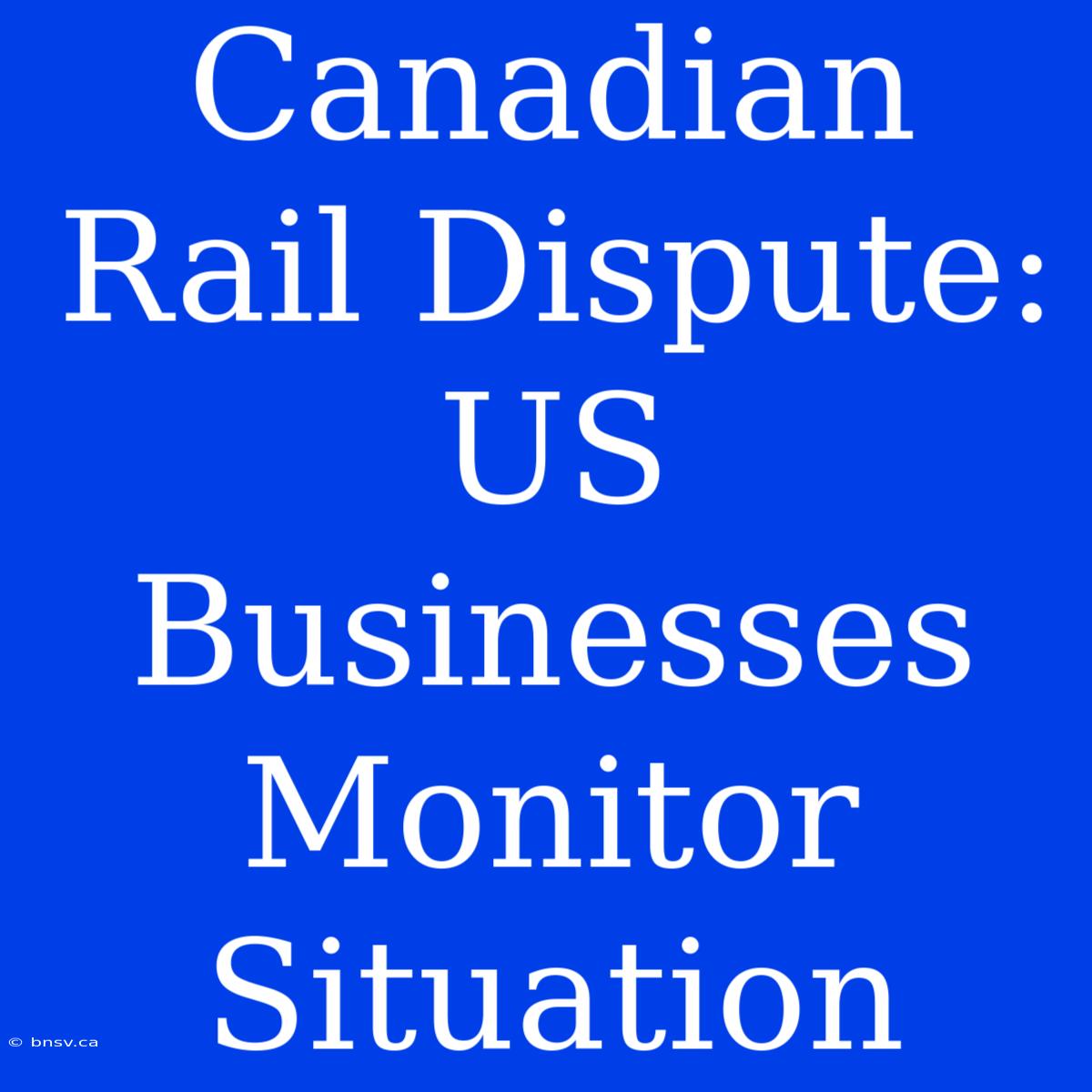Canadian Rail Dispute: US Businesses Hold Their Breath as Negotiations Stall
Editor's Note: The Canadian rail dispute continues to simmer, with negotiations between unions and rail companies at a standstill. As the clock ticks, US businesses are closely watching the situation, aware of the potential ripple effects on their supply chains. This ongoing conflict highlights the interconnectedness of North American economies and underscores the vital role of rail transportation in global trade.
Analysis: This article aims to provide an in-depth analysis of the Canadian rail dispute and its implications for US businesses. We have researched recent developments, consulted expert opinions, and analyzed the potential economic consequences to offer a comprehensive understanding of this critical issue.
The Canadian Rail Dispute: A Complex Web of Issues
The ongoing dispute involves unions representing approximately 3,000 workers who are seeking improved working conditions, including better wages and sick leave policies. Rail companies, on the other hand, are pushing back against these demands, citing concerns about rising costs and competitiveness.
Key Aspects of the Dispute
- Labor Shortages: The rail industry faces a growing labor shortage, making it difficult to attract and retain skilled workers.
- Wages and Benefits: Unions argue that rail workers are underpaid and lack adequate benefits compared to other sectors.
- Working Conditions: Concerns about long hours, limited access to sick leave, and demanding work schedules are driving the dispute.
- Economic Impact: The potential for a nationwide rail strike poses significant risks to the Canadian economy, with potential ramifications for US businesses reliant on cross-border trade.
Impact on US Businesses:
The Canadian rail dispute directly impacts US businesses that rely on cross-border shipments of goods. Many sectors, including manufacturing, agriculture, and retail, are exposed to supply chain disruptions, leading to:
- Delays in Shipments: A strike could lead to significant delays in the movement of goods across the border.
- Increased Costs: Businesses may face higher transportation costs as alternative modes of transport become necessary.
- Product Shortages: Disruptions in supply chains could lead to shortages of essential goods in the US market.
- Lost Revenue: Companies may experience lost revenue due to delays in production and distribution.
The US Perspective:
The US government is closely monitoring the situation, recognizing the potential impact on American jobs and the economy. US businesses are also voicing concerns and urging a swift resolution to the dispute.
Possible Solutions:
- Mediation: Both sides could agree to engage in mediation with an independent third party to facilitate negotiations.
- Government Intervention: The Canadian government could intervene to prevent a strike by imposing binding arbitration or enacting legislation.
- Compromise: Both sides need to be willing to compromise and reach an agreement that addresses the core concerns of workers and companies.
FAQs:
- Q: What are the main demands of the unions?
- A: The unions are seeking improved wages, sick leave policies, and better working conditions.
- Q: What are the concerns of the rail companies?
- A: Rail companies are concerned about rising costs, competitiveness, and the impact of increased labor demands on their operations.
- Q: What is the potential economic impact of a strike?
- A: A strike could lead to significant delays in shipments, increased costs, product shortages, and lost revenue for businesses across North America.
- Q: What are the possible solutions to the dispute?
- A: Potential solutions include mediation, government intervention, and compromise between both sides.
- Q: What role is the US government playing?
- A: The US government is monitoring the situation closely and advocating for a swift resolution to minimize disruptions to cross-border trade.
- Q: How are US businesses responding to the dispute?
- A: US businesses are expressing concerns about potential disruptions to their supply chains and urging a peaceful resolution.
Tips for US Businesses:
- Monitor the situation: Stay informed about developments in the dispute and its potential impact on your business.
- Diversify your supply chain: Explore alternative suppliers and modes of transportation to minimize the risk of disruptions.
- Build inventory: Consider increasing your inventory levels to buffer against potential shortages.
- Communicate with customers: Keep your customers informed about potential delays or disruptions.
Summary:
The Canadian rail dispute poses a significant challenge to North American businesses and highlights the interconnected nature of global trade. While negotiations continue, US businesses are closely monitoring the situation and taking steps to mitigate potential disruptions to their operations.
Closing Message:
This ongoing dispute underscores the importance of effective labor relations and the need for proactive measures to ensure a stable and efficient supply chain for North American economies. As the situation unfolds, it is critical for all parties to engage in open dialogue, seek compromise, and prioritize a swift resolution that addresses the concerns of both workers and businesses.

